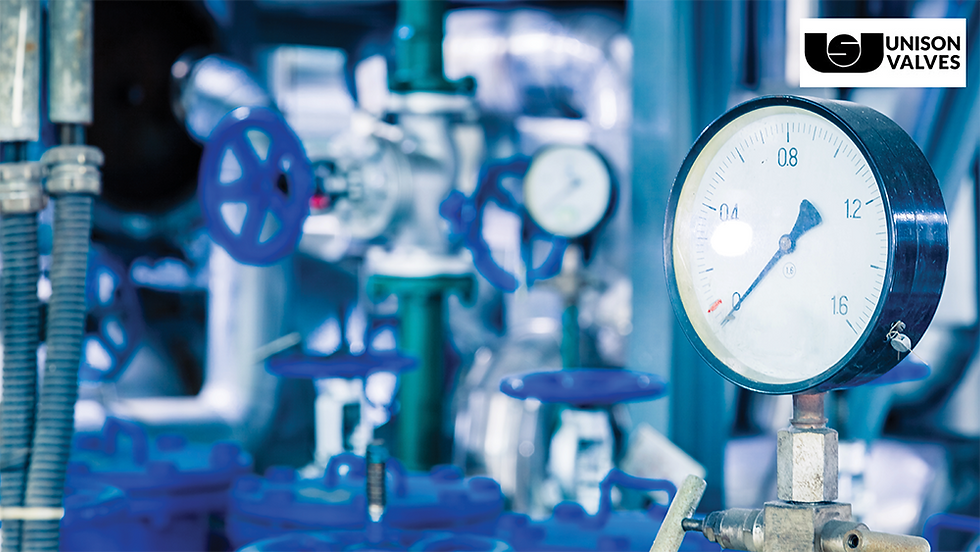Mastering Valve Terminology: Essential Terms and Concepts
- Sai Kapil Reddy
- Sep 11, 2024
- 3 min read

Understanding valve terminology is essential for anyone working in or around industrial processes. This comprehensive guide will provide a detailed explanation of common valve terms and concepts, helping you communicate effectively and make informed decisions.
Basic Valve Components
Body: The main structural part of the valve, providing support and containing the internal components. It is typically made of materials like cast iron, stainless steel, or bronze.
Stem: The movable part that controls the flow of fluid. It can be a rising stem or non-rising stem, depending on the valve type. Rising stem valves have a visible stem that rises or falls as the valve opens or closes, while non-rising stem valves have a hidden stem.
Packing: The material used to seal the stem and prevent leaks. Packing can be made of various materials, such as graphite, PTFE, or asbestos. The packing gland is the part that holds the packing in place.
Seat: The surface against which the stem seals. The seat material must be compatible with the fluid being handled to prevent leaks and corrosion. Seats can be made of materials like soft metals (e.g., PTFE, EPDM, etc.) or hard materials (e.g., Stellite or tungsten carbide).
Actuator: The device used to operate the valve, such as a handwheel, lever, motor, or pneumatic cylinder. Actuators provide the necessary force or torque to open or close the valve.
Valve Types
Gate Valve: A valve with a gate that slides up and down to control flow. Gate valves are typically used for on/off service and have a low pressure drop. They are suitable for large-diameter lines and applications where complete shut-off is required.
Globe Valve: A valve with a plug that rotates to control flow. Globe valves are suitable for throttling applications and offer precise control over flow rates. They are often used in systems where frequent adjustments to flow are necessary.
Ball Valve: A valve with a rotating ball containing a hole to control flow. Ball valves are known for their quick operation, low pressure drop, and ease of maintenance. They are widely used in various industries due to their reliability and versatility.
Butterfly Valve: A valve with a disc that rotates to control flow. Butterfly valves are suitable for large-diameter lines and offer fast actuation and cost effectiveness. They are often used in applications where throttling, quick opening and closing is required
Check Valve: A valve that allows flow in one direction only and prevents backflow. Check valves are commonly used in piping systems to maintain system pressure and prevent fluid from flowing backward.
Plug Valve: A valve with a rotating plug to control flow. Plug valves are suitable for both on/off service and throttling applications. They are often used in harsh environments due to their durability and resistance to abrasion.
Valve Operations
Open: The valve is fully open, allowing maximum flow.
Closed: The valve is fully closed, preventing flow.
Partially Open: The valve is partially open, allowing a controlled amount of flow
Throttling: The process of regulating flow by partially opening or closing the valve. Throttling can be used to control pressure, temperature, or flow rate.
Valve Materials
Some material options are given below. There are various material options and different grades within each of these options that can be considered for your application. A materials expert or consultant in the valve industry can help you identify the right material for your application. You may also reach out to our team for further discourse.
Stainless Steel: A common material known for its corrosion resistance, strength, and durability. Suitable for a wide range of applications, including chemical processing, food and beverage, and pharmaceutical industries.
Cast Iron: A cost-effective material suitable for general-purpose applications, such as water and wastewater treatment.
Brass: A ductile and machinable material often used in plumbing and HVAC applications.
Bronze: A corrosion-resistant material, especially suitable for marine environments.
Valve Accessories
Actuators: Devices used to operate valves, such as handwheels, levers, motors, or pneumatic cylinders. Actuators can be manual, electric, or pneumatic.
Gear boxes: Gear boxes attached with handwheels are used to reduce the effort of valve operation typically used on larger sizes and high pressure valves. A Gear box fitted with a clutch is used as a manual override in automation applications to over the system if required.
Positioners: Devices that ensure accurate positioning of valves. Positioners can be used to maintain a specific valve position or to control flow rate.
Solenoids: Electromagnets used to control valves. Solenoids are often used in combination with pneumatic or hydraulic actuators.
Limit Switches: Devices used to monitor valve position and prevent overtravel. Limit switches can be used to ensure safe operation and prevent damage to the valve.
By understanding these key terms and concepts, you can effectively communicate and work with valves in various industrial settings. To learn more about valve selection, installation, and maintenance, contact Unison Valves, a leading provider of high-quality valves and solutions



Comentarios